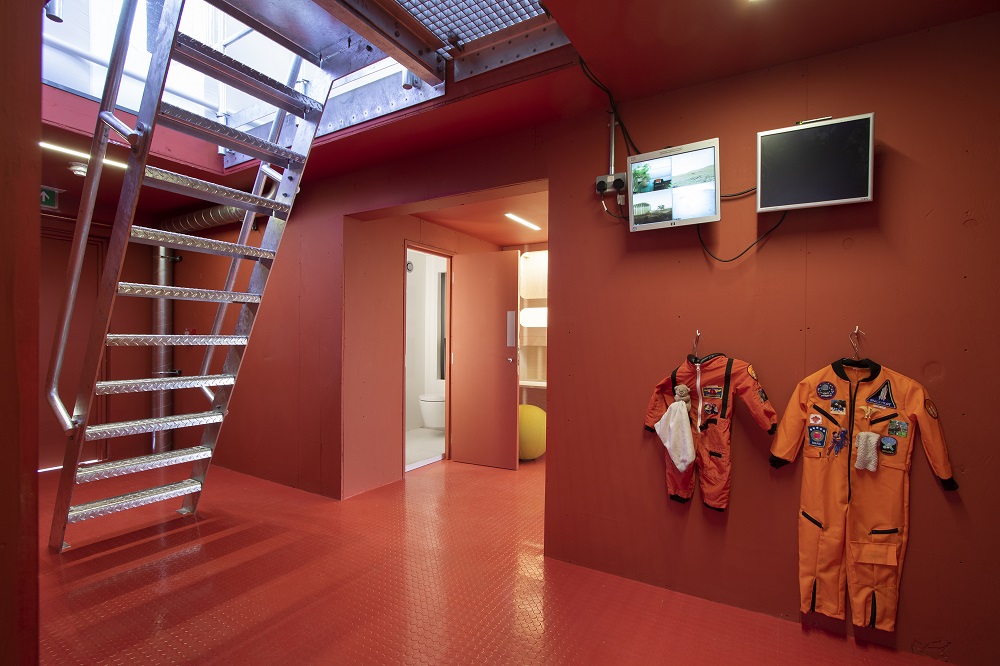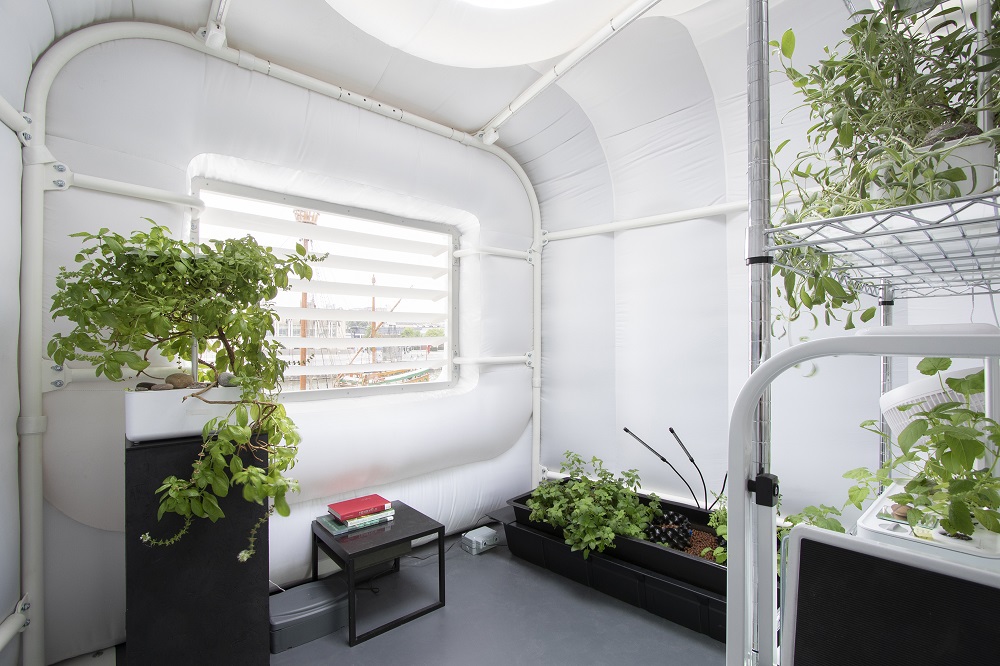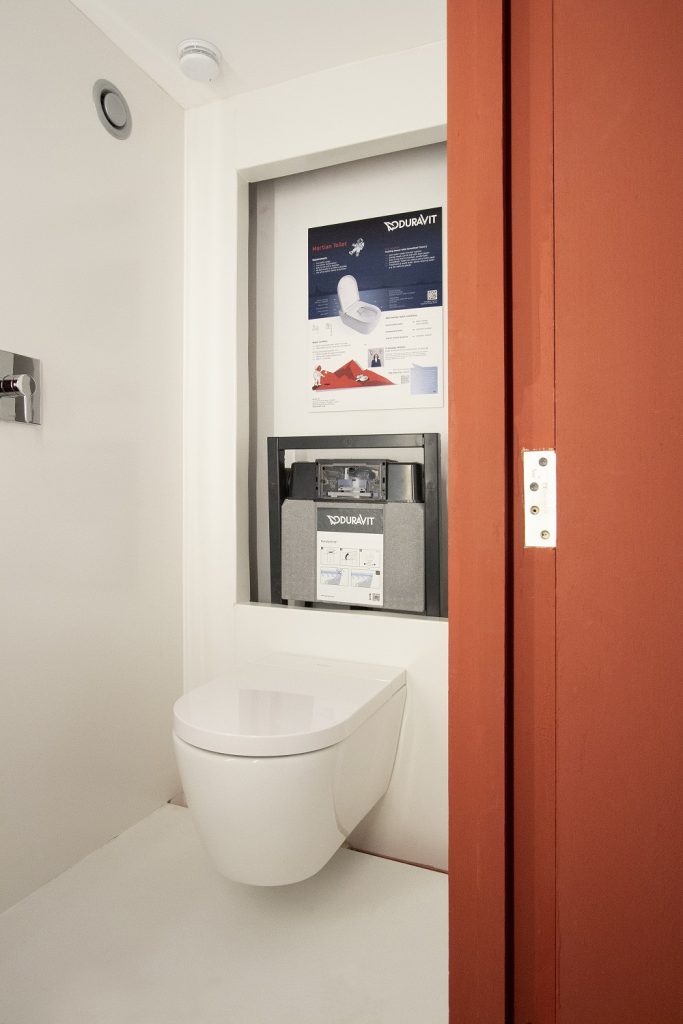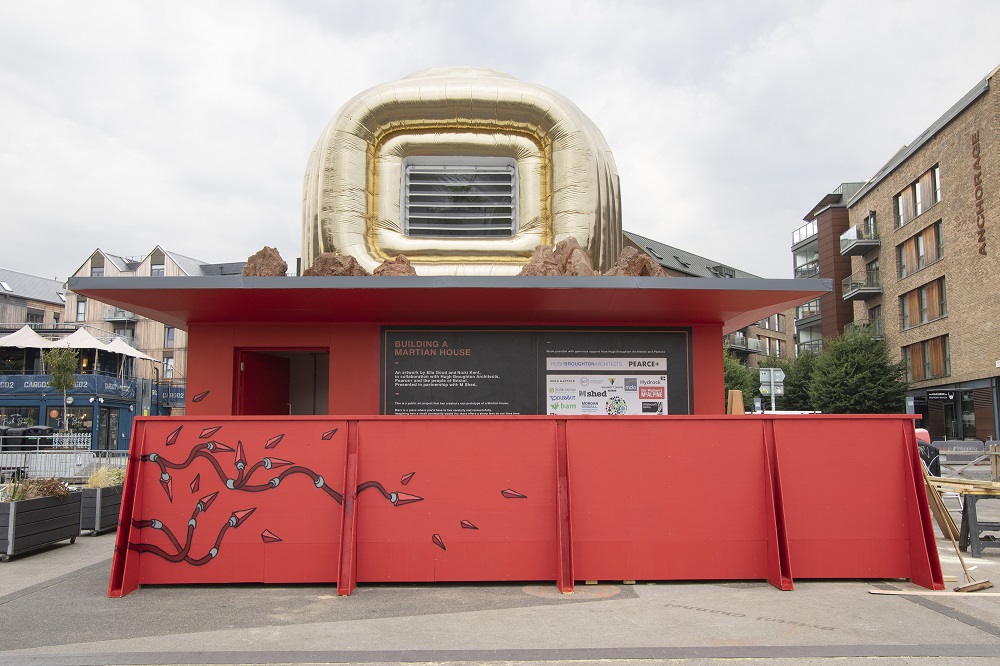Duravit’s contribution includes the expertise of development engineer Franziska Wülker and products such as SensoWash® Starck f.
What might life on Mars look like? How would everyday living be managed? Two artists from Bristol, working with an interdisciplinary team, have taken it upon themselves to answer these questions by building the Martian House. Duravit is also in the mix thanks to the expertise of development engineer Franziska Wülker and products like SensoWash® Starck f – the Martian Toilet.
Visionary project
Inspired by the Earth-like planet Mars, the artists Ella Good and Nicki Kent brought the project “Building a Martian House” to life in collaboration with Hugh Broughton Architects and Pearce+. The aim of the public art project is to build a real prototype of a Martian house.
Nicki Kent explained: “Mars is a place where you’d have to live carefully and resourcefully.” Ella Good added: “Imagining how a small community would live there offers a sharp lens on our lives here on Earth today and our fraught relationship with consumerism.”

Standard of living and comfort in an environment that is hostile to life
Franziska Wülker, head of research & development at Duravit AG, came on to the initiators’ radar. In 2020 she took part in the NASA Lunar Loo Challenge, the aim of which was to develop a toilet that would work both in zero-gravity and on the moon. Wülker’s design ranked among the top three.
The development engineer’s fascination and motivation to be involved in the project arises from the discrepancy between the hostile planetary environment and daily comfort: “Everyday life on Mars is challenging and arduous as a result.
That’s why it’s so important that everyday items in the home are designed to be as simple and comfortable as possible. That applies especially to the things we don’t like talking about, such as using the toilet.”


Different approaches to a Martian toilet
Requirements for the Martian Toilet include low water and electricity use, ease of operation and maintenance, prevention of unpleasant odors as well as the ability to use urine and feces as fertilizer.
Franziska Wülker identified various approaches: incinerating toilet, separation & composting toilet, freeze-drying, or a toilet with a water flush. Freeze-drying, for instance, removes any water contained in the matter and enables the dried residue to be disposed of. Mars is subject to cold temperatures and low pressure, both of which are required for freeze-drying. “At the same time, the overall process is complex, and we want to make life comfortable for the astronauts on Mars.”
Water extraction on Mars
The total volume of the ice reservoir on Mars is 5,000,000 km³. Franziska Wülker: “On Mars there are ice caps at the north and south poles. Some parts of the planet have subterranean ice layers and glaciers up to 100 meters thick and close to the surface. So it’s best to build the Mars base where there’s lots of ice that’s easy to get at.” Water could be extracted by drilling and melting frozen water.

The Martian toilet: SensoWash ® Starck f
Franziska Wülker: “SensoWash® reduces the consumption of toilet paper, which also ensures a high level of comfort and hygiene.” A symbiosis of toilet and bidet, Duravit’s SensoWash® shower toilet offers gentle and comfortable hygiene. Pure water is an ideal way to ensure gentle, highly hygienic cleaning. Significantly gentler and more sustainable than toilet paper, water removes bacteria, boosts circulation, and is gentle on skin.
Expanding on her theoretical ideas, Franziska Wülker said: “Treated grey water from washbasins, showers, etc. can be used for flushing via a circular system. It is also conceivable that an additional urinal could be used to separate urine and turn it into fertilizer.”
Franziska Wülker and the project team ultimately opted for a shower-toilet: “We opted for a toilet with a water flush. We’ve also integrated a shower function, which is comfortable and hygienic – plus there’s a lot more water than toilet paper on Mars.”
Exhibition in Bristol
The house at M Shed Square in the English city of Bristol will be open to the public until October It will start off as an empty façade and will come to life thanks to alternating interiors that provide opportunities to collectively explore a new, sustainable culture.
Initiator Nicki Kent: “It is to be a place where people can research, experiment, and discuss: a blank canvas to try things out and imagine new perspectives for today’s lifestyles.”
Ella Good sums up: “Each of us has expertise to offer and a part to play in shaping our shared future.”

More news from Duravit


